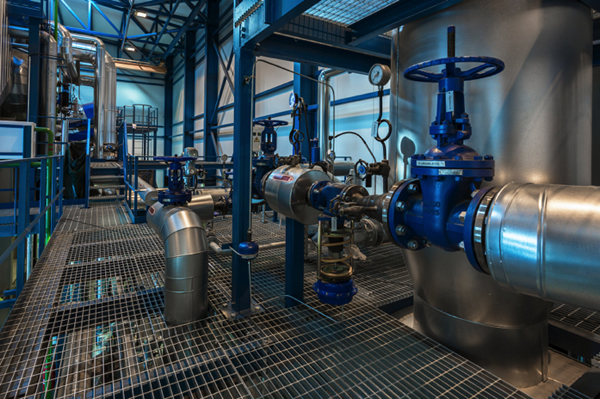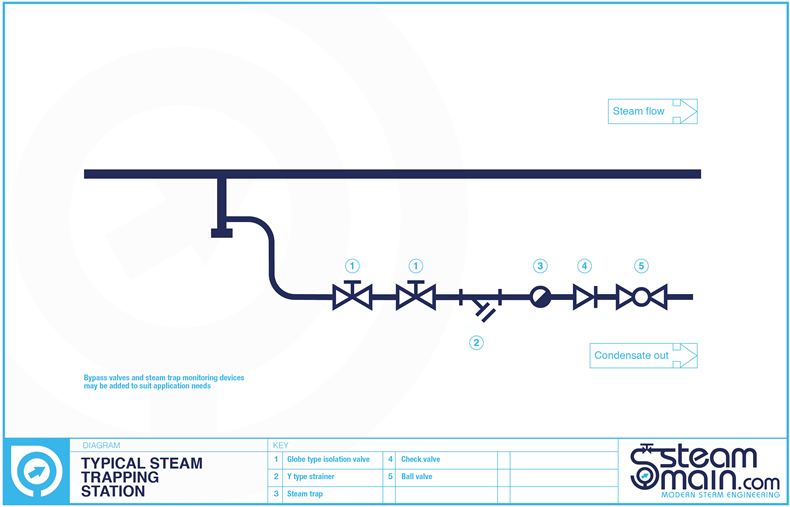Have you ever heard a loud bang or hammer-like sound when near a steam system? When water hammer occurs, a momentary and very abrupt pressure change takes place inside the piping. This impact can severely jar piping, piping supports, equipment, damage gaskets, and valve flanges or even the valves themselves. Bad cases of waterhammer can lead to a serious incident.
The good news is that if a steam system is properly designed and maintained waterhammer should not occur.

Water hammer is caused when a whole pocket, or “slug” of water is picked up by the steam in the pipe and carried forward in a solid column until it hits a change in direction of the pipework, or a valve. Water is virtually incompressible, and when it is bought to a sudden halt from travelling along at the speed of the steam flow, waterhammer occurs. The sudden halt forces the water to give up the kinetic energy that it possesses, and this is what causes the loud bang and jarring in the steam system.
The design and maintenance of a steam system must prevent waterhammer from occurring. This should be done by:
- Steam pipework and mains should fall in the direction of flow to ensure condensate is moved to a point where it can be removed safely.
- Adequate number of drain points and steam traps so that condensate can be removed where it collects. Low points should always be drained.
- The correctly sized, type and design of steam trap should be used at each drain point.

- Ensure that steam traps are regularly tested and maintained. A steam trap that is blocked shut, will not discharge condensate.
- When starting a steam system from cold always ensure that steam valves are opened slowly. This ensures that the system can cope with the large amount of condensate formed while the system is warming up. In addition the slow opening weakens the inertia and therefore impact of any columns of water in the steam pipework.
- Make sure that the design of the system allows the condensate to flow and be removed downstream of the steam trap. If the steam pressure is lower than the condensate discharge, then condensate will not be removed, and will back up. Use of a pump, or an alteration in the condensate pipework layout may be required.
- Old sagging steam pipework should be replaced and the new pipework correctly supported.
- Waterhammer can sometimes occur in condensate return pipework. Care needs to be taken in the design of condensate return pipework where high and low pressure condensate is mixed, particularly if the return main is “flooded”. High pressure condensate flashes off into flash steam when its pressure is reduced, as it goes into a lower pressure return line. Waterhammer results from the force of this flash steam on the other condensate (water) in the pipework.

